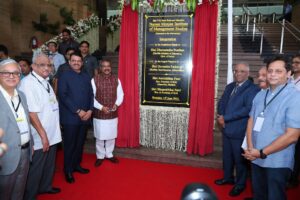
Global iron ore prices have rose 30% to $90/ tonne as of February 2019 from $69 per tonne in December 2018 because of supply disruption at Vale’s mines in Brazil, which account for ~90% of the country’s production of high-
grade ore (64 Fe).
Given that China sources 20-25% of its 1.06 billion tonne iron ore imports from Brazil, this unsettling wave would keep global prices elevated in the near term as offsetting shortage takes time. The even demand growth prospects in China could weigh on prices in second half of 2019, keeping them at $72-75 per tonne on average for the year.
That augurs well for Indian miners. After a continuous decline since November, the local miners took price hikes of
Rs 600-700 per tonne for 62 Fe fines and Rs 800-900 per tonne for pellets in February.
Elevated global prices, expectation of further depreciation of rupee, and modestly healthy demand growth prospects
of 5.5-6.5% in domestic steel industry are expected to provide reasonable room for domestic miners to enjoy high
prices through CY2019, especially in the first half.
Says Prasad Koparkar, Senior Director, CRISIL Research, “We foresee domestic iron ore prices rising 3-4%
during CY2019. This would have a direct bearing on 62% of the steel production that is based on supply from
merchant miners. Further, domestic steel prices are expected to soften following global cues. This would
heap pressure on margins of steel makers who lack captive iron ore supply – especially long steel players –
impacting their gross spreads by 2-4%.”
The impact would have been higher but for a decline in the cost of coal. All this is far from august for a sector that is
still struggling to recover. Long steel player’s (set of 14-15 integrated mid-sized long steel players) debt-to-EBITDA
multiple is still precarious at ~9 and interest coverage at <1 times.
Indian pellet players are also expected to benefit marginally from the supply disruption in Brazil, which has impacted 11 MT of pellet supply. Given that China has increased its reliance on pellet (as part of its clean air policy) and Indian players are better positioned to offset the supply shortage, this would potentially boost revenue growth of Indian pellet makers.
Says Rahul Prithiani, Director, CRISIL Research, “Odisha is expected to see production ramp up this fiscal,
though Goa and Karnataka will remain subdued. Karnataka’s crude steel production of 13-14 MT would
require 24-27 MT of iron ore. Continued suspension of NMDC’s Donamalai mine with production of 6 MT and
slower ramp-up of captive production in the state would keep markets tight given that the state only
produced ~29 MT of iron ore in FY18.”
India’s iron ore imports have risen 1.5 times to an estimated 11.8 MT between April and December, 2018, led by
steel producers located in the west and south. Local procurement issues in Karnataka, coupled with high landed cost
of supply from Odisha, has led to players relying on imports. Further, the mining ban on Goa, which is a key exportingstate, has resulted in India being a net importer for iron ore in years.
We believe the rise in iron ore imports is a short term phenomenon and would soften in near term, given elevated
global iron ore prices through the first half of the calendar and ramp-up in captive production by large players.
Domestic iron ore industry is also faced with high stockpiles of 150 MT (largely low grade ore) with annual production at 200-210 MT. Iron ore mining auctions of 80 MT in April 2020 will also slow the price tempo from Q4FY20 as merchant miners maximise output before the deadline.



